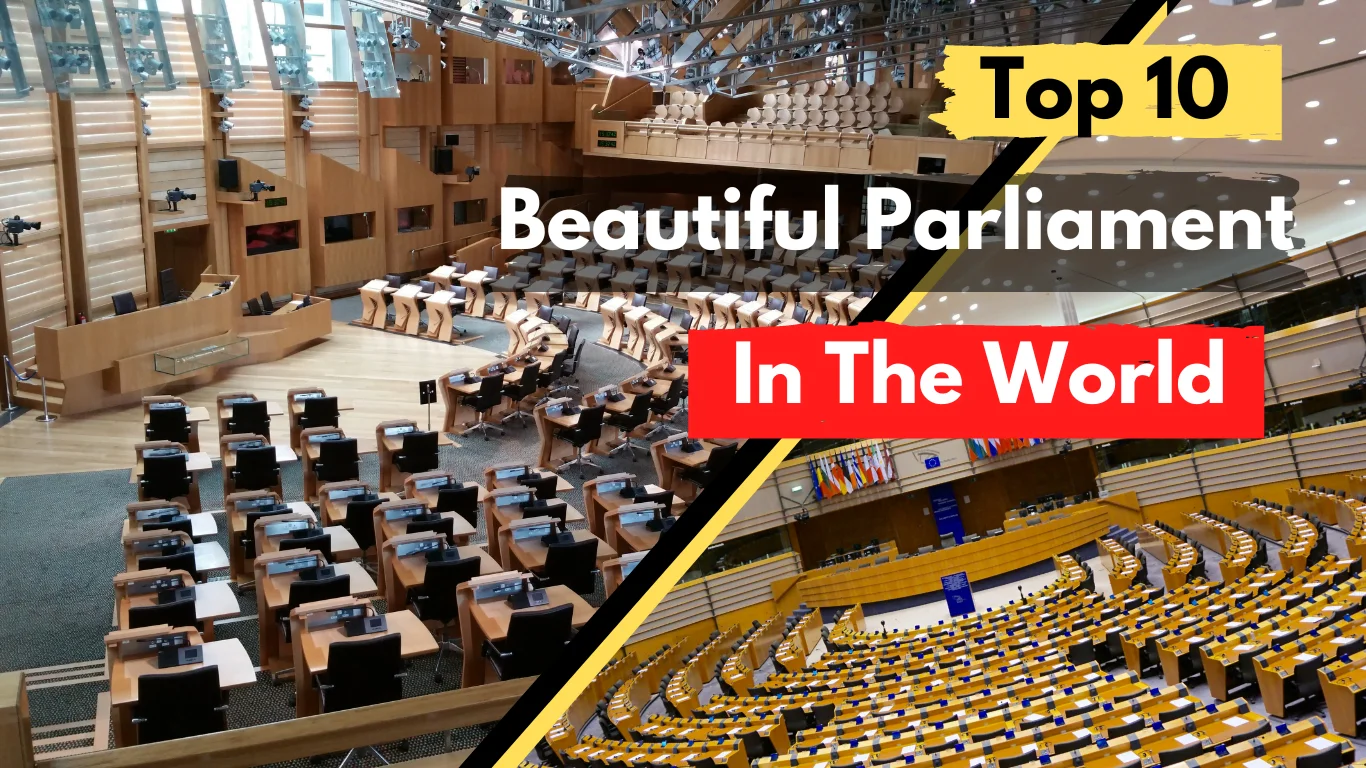Top 10 Beautiful Parliament Buildings In The World
Here are the Top 10 Beautiful Parliament Buildings In The World, along with some notable features :
01. China – National People’s Congress:
Size: The largest parliamentary body in the world with 2,980 members.
Sessions: Meets once a year for approximately two weeks.
Power: Holds significant legislative and constitutional authority.
02.United Kingdom – Parliament of the UK
Size: Consists of two houses, the House of Commons and the House of Lords, with a total of 1,443 members.
Longevity: One of the oldest parliamentary systems, dating back to the 13th century.
Democratic Tradition: Known for its adherence to democratic principles and parliamentary debates.
03.European Union – European Parliament:
Size: Represents the member states of the European Union and has 705 members.
Transnational Legislature: Members elected from across the European Union, representing diverse political perspectives.Legislative Functions: Participates in the legislative process of the European Union, including decision-making and policy formulation.
04.India – Parliament of India:
Size: Comprises two houses, the Lok Sabha (House of the People) and the Rajya Sabha (Council of States), with a combined strength of 790 members.
Federal Structure: Reflects the federal nature of India’s governance system.
Democratic Representation: Members elected through a nationwide democratic process.

05.Russia – Federal Assembly of Russia:
Size: Consists of two houses, the State Duma and the Federation Council, with a total of 634 members.
Bicameral System: The State Duma represents the lower house, while the Federation Council represents the upper house.
Legislative Authority: Responsible for enacting laws and overseeing the executive branch of government.
06.Japan – National Diet:
Size: Comprises two houses, the House of Representatives and the House of Councillors, with a total of 711 members.
Legislative Power: Responsible for enacting laws, approving the national budget, and overseeing the government.
Importance: Plays a central role in Japan’s political decision-making process.
07.Brazil – National Congress of Brazil:
Size: Comprises two houses, the Chamber of Deputies and the Federal Senate, with a total of 594 members.
Federative Republic: Reflects Brazil’s federal governance structure.
Legislative Authority: Responsible for creating federal laws and overseeing government actions.
08.Indonesia – People’s Consultative Assembly:
Size: Consists of two houses, the Regional Representative Council and the People’s Representative Council, with a total of 711 members.
Pluralistic Democracy: Represents the diverse regions and socio-cultural backgrounds of Indonesia.
Role: Participates in the legislative process, elects the president, and discusses important national issues.
09.Mexico – Congress of the Union:
Size: Comprises two houses, the Chamber of Deputies and the Senate, with a total of 628 members.
Democratic Representation: Members elected through a democratic process.
Legislative Functions: Responsible for enacting laws, overseeing the executive, and representing citizen interests.
10.Germany – Bundestag:
Size: The lower house of the German federal parliament with 709 members.
Parliamentary Democracy: Represents the democratic principles of Germany.
Legislative Power: Enacts federal laws, controls the budget, and exercises oversight over the government.
These parliaments vary in size, structure, and legislative authority, but they all play crucial roles in their respective countries’ democratic processes and governance systems.
The Parliament And The Country –
The relationship between the parliament and the country is a crucial aspect of democratic governance. Parliaments serve as the legislative branch of government in many democratic countries and play a central role in the governance and decision-making processes.
Here are some key aspects of the relationship between the parliament and the country :
Representation: Parliament represents the citizens of a country and acts as their voice in the legislative process. Members of parliament (MPs) are elected by the people to represent their interests, concerns, and aspirations.
Lawmaking: One of the primary functions of parliament is to make laws. MPs propose, debate, and vote on legislation that addresses various issues affecting the country. The laws passed by parliament have a direct impact on the lives of citizens, shaping the legal framework and societal norms.
Oversight of the Executive: Parliament provides oversight over the executive branch of government, which includes the president or prime minister and their cabinet. MPs scrutinize government policies, actions, and expenditures, holding the executive accountable for its decisions.
Budgetary Control: Parliament plays a significant role in the budgetary process. MPs review, debate, and approve the government’s budget, ensuring that public funds are allocated appropriately and transparently.
Debate and Discussion: Parliament serves as a forum for open debate and discussion on various issues of national importance. MPs express different viewpoints, engage in constructive dialogue, and contribute to shaping public policy through their deliberations.
Representation of Interests: Parliament provides a platform for diverse interests within the country to be heard. MPs represent different political parties, regions, and social groups, reflecting the pluralistic nature of society and ensuring that different perspectives are considered in decision-making.
Constitutional Role: In constitutional democracies, parliament often has a crucial role in upholding and amending the constitution. It may have the power to approve constitutional amendments or serve as the final arbiter in constitutional matters.
Public Engagement: Parliament serves as a bridge between the government and the people. It encourages citizen participation through public consultations, committee hearings, and engagement with civil society organizations, allowing citizens to contribute to the legislative process and policy formulation.
Overall, the relationship between the parliament and the country is characterized by representation, lawmaking, oversight, and public engagement, aiming to ensure democratic governance, transparency, and accountability.
I hope guys you love this article . Top 10 Beautiful Parliament Buildings In The World . We will keep posting more important posts for all of you on our website. Please give your support and love.
Read More –
- Top 10 Team With Most Winner In IPL Sports
- Top 10 Metaverse Technology Country In The World
- 10 Most Dangerous Wars In The World
- Which Top 10 Country Use Cloud Seeding
Top 10 Beautiful Parliament Buildings In The World